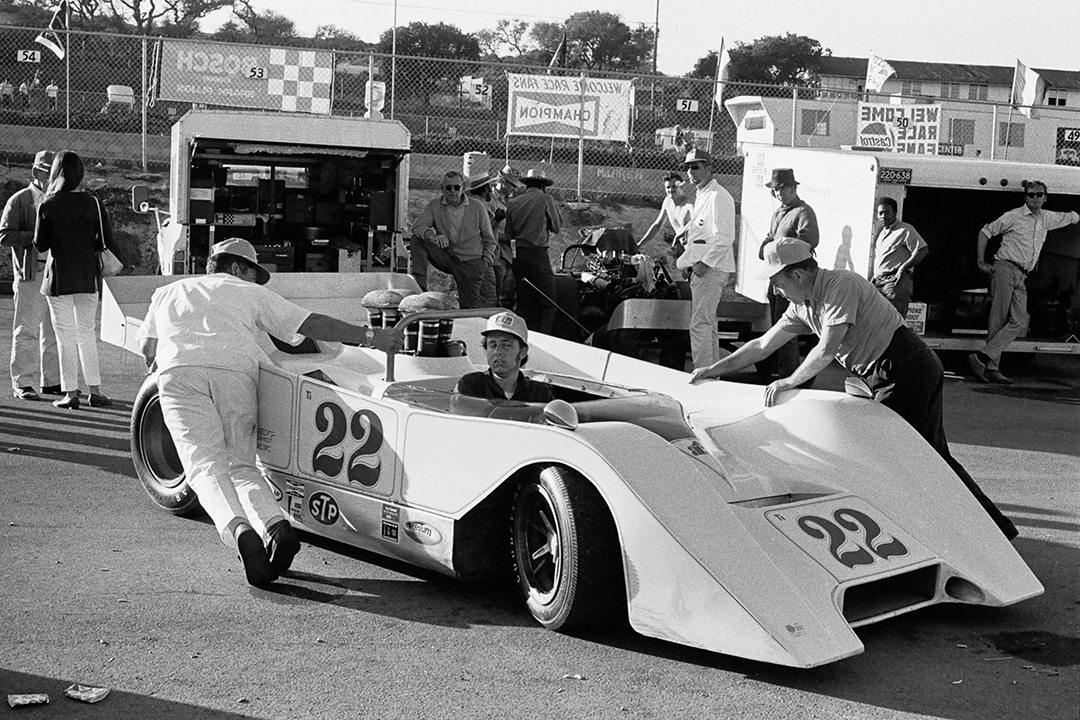When the sports car scene started to heat up again in ’65-’66, I went to work for Motorsport Design in Connecticut, and we built a McLaren M6A for John Cannon. After that I was hooked on the Can-Am so I moved back to California, when I became Peter Revson’s mechanic for the T70 that he drove for Dana Chevrolet. In ’68, Dana Chevrolet quit racing, so I went to work for Carl Haas. By the end of ’68, however, Haas decided that he was only going to run one car the following year, so he let me go. Fortunately for me, Skip Scott introduced me to a guy named Ernie Cansburg, who was the grandson of Henry Ford—interesting guy—and Ernie agreed to provide a Formula 5000 car for Skip. So I went to work for Ernie, but Skip was supposed to be getting sponsorship to run the car, but couldn’t manage to raise the money. As a result, Ernie decided not to run in F5000 and he asked me what to do, and I thought, “Oh my God, I’m out of work again.” So I said, “Well, you know, you told me you have always wanted to have your own car, why don’t we build a Can-Am car?” because by then I figured I knew what I was doing. I had some good ideas about aerodynamics, and I had a fantastic grasp of the obvious, so I said, “I think I can design you a car, for the Can-Am, and we’ll put your name on it. And we’ll get a GP driver and a sponsor.” I approached Goodyear, since by then I had a good relationship with Goodyear, and they said that they’d put the money out. So I designed and built the Ti22. We started designing the car in May ’69, and by September we had it running. We got Jackie Oliver to drive it. Our first race was Laguna Seca, and while we started from the back of the grid because of some teething problems we ran as high as 7th, and finished 13th.
Really, there were two reasons for doing the Ti22. One of them was…I had discovered some of the ground-effect stuff, the aerodynamic stuff that was going on, and realized you could not have a floppy chassis. You have to have very high torsional rigidity. All of the cars that I worked on previous to that had suspension problems because of torsional weakness in the chassis. So I decided I was going to make the strongest, lightest car that I could, and Skip Scott knew the president of the Titanium Metal Corporation of America so he introduced me to him. And they agreed to fabricate some of the bulkheads and give us titanium and stuff for the parts. And it absolutely worked like crazy. The chassis tub for the Ti22 was so stiff—we tried to twist it by putting on fixtures at the suspension pickup points—and we got it to 10,000 pounds and it did not bend any part of a degree, which was far stronger than anything else at the time.
No Subscription? You’re missing out
Get immediate ad-free access to all our premium content.
Get Started



